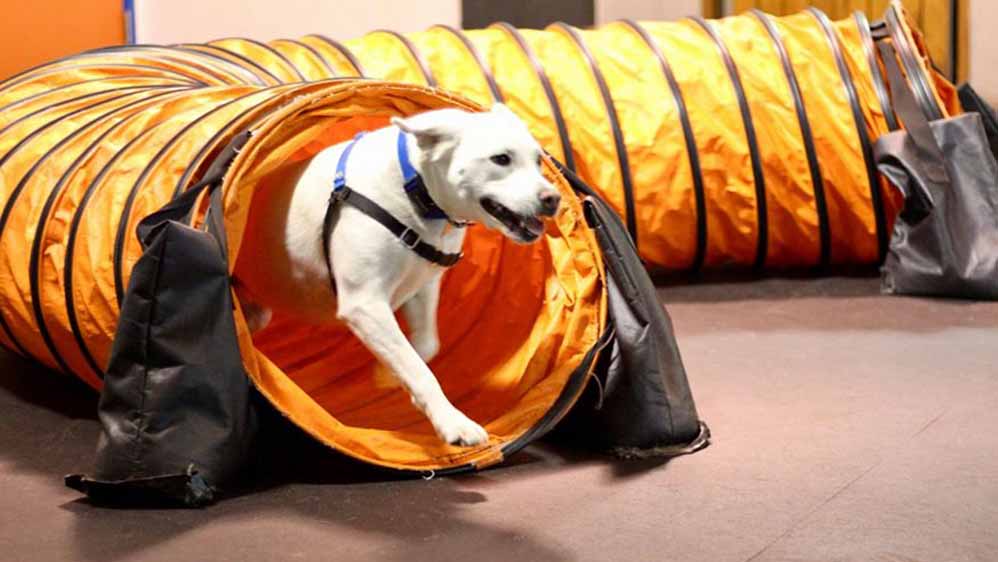The Ultimate Guide to Pet Training: Building a Satisfied, Obedient Family Pet
Effective pet dog training is a complex process that depends upon a deep understanding of canine actions and the application of tested strategies. By embracing positive support and regular command usage, family pet proprietors can cultivate not only obedience however additionally a strong, trusting partnership with their dogs. The trip does not end with fundamental commands; resolving behavioral problems and producing a supporting training setting are equally critical components. As we explore these components, it ends up being noticeable that the path to a content and well-behaved canine buddy may hold much more intricacies than one may at first think.

Comprehending Canine Actions
How does a canine's actions show its emotional and mental state? A pet's activities can serve as a window right into its sensations, needs, and general psychological well-being.
Body movement additionally plays a critical role in recognizing canine actions. A kicked back stance and open mouth signal comfort, whereas strained muscular tissues and pinned ears may suggest stress and anxiety or aggressiveness. Observing these signals is necessary for identifying the root creates of a canine's actions, whether it stems from concern, excitement, or disappointment.
Additionally, a dog's interaction with its environment and other animals can offer insight into its mood. A pet dog that involves happily with other canines is likely sensation social and secure, while one that displays evasion or hostility may be experiencing tension or insecurity. Understanding these behavior cues is crucial for promoting a strong connection between the animal and the owner, eventually contributing to the pet dog's psychological wellness and health.
Essential Training Techniques
Efficient pet dog training techniques are vital for fostering desirable actions and enhancing the bond in between a pet and its owner. Making use of positive reinforcement is just one of the most effective approaches, where rewards such as deals with, praise, or play are provided to reinforce preferred actions (Dog training). This motivates the dog to duplicate those behaviors, producing a favorable understanding atmosphere
Uniformity is another essential aspect in pet dog training. Commands must be uniform and clear, and all relative should use the exact same regulations to avoid puzzling the pet. Timing is equally vital; benefits must be offered right away after the wanted behavior to establish a clear link in between the action and the reward.
Furthermore, brief and engaging training sessions are efficient, as pet dogs have differing attention spans. Objective for sessions of 5 to 15 minutes, relying on the dog's age and energy level. Incorporating play right into training can also improve motivation and pleasure for both the pet dog and the proprietor.
Last but not least, perseverance is essential. Canines learn at their own pace, and maintaining a calm behavior will assist minimize frustration, guaranteeing a positive training experience. These important methods prepared for successful pet dog training and an unified partnership.
Standard Commands to Instruct

Usage treats, praise, and playtime to reward your canine's successes. By instilling these basic commands, proprietors outfit their pets with the skills necessary for a harmonious and well-behaved relationship.
Attending To Typical Behavioral Problems
Comprehending and dealing with common behavior problems in canines is necessary for promoting a harmonious relationship in between family pets and their owners. Many dogs show actions such as extreme barking, chewing, or aggression, which can stem from anxiousness, monotony, or lack of proper training. Recognizing the source of these behaviors is the initial step towards effective treatment.
As an example, excessive barking might suggest a need for attention or a response to environmental stimulations. In such situations, owners should assess the pet's setting and provide ample psychological stimulation, such as interactive toys or regular workout. Chewing can often be managed by redirecting the behavior to proper eat items and ensuring that the pet dog has sufficient physical activity to decrease dullness.
Hostile behavior calls for cautious handling and may necessitate expert training assistance. It's important to comprehend that punishment can intensify anxiety and aggression, causing a cycle of behavioral issues. Rather, concentrate on favorable support methods to award desirable actions and strengthen a complacency.
Structure a Positive Training Atmosphere
Producing a favorable training setting is fundamental for reinforcing desirable habits in pets and mitigating behavioral problems. This atmosphere must be identified by uniformity, encouragement, and a clear understanding of the training objectives. By establishing a routine, canines learn what is expected of them, which helps in reducing stress and anxiety and confusion.
Using favorable support strategies, such as deals with, appreciation, and play, fosters a sense of security and motivation in the dog. Rewarding etiquette promptly and continually strengthens the preferred activities, making the training process more effective - dog training near me. Additionally, fitness feeding dog in crate instructors must remain client and calmness, as pet dogs are delicate to their handlers' feelings
The training area must be devoid of interruptions to guarantee the canine can concentrate on the tasks handy. Consider utilizing a peaceful space or a safe exterior location. Moreover, incorporating playtime you can try this out and socializing right into training sessions promotes an all-round strategy, improving the canine's learning experience.
Inevitably, a favorable training atmosphere nurtures a solid bond in between the pet and handler, leading to a loyal, happy pet dog. By prioritizing this environment, pet dog owners can effectively resolve behavioral difficulties and grow an effective training trip.
Verdict
Reliable dog training counts on an extensive understanding of canine behavior and the application of favorable support methods. By understanding important commands and resolving behavior concerns with patience and clear interaction, proprietors can foster a solid bond with their animals. Developing an encouraging training environment improves protection and trust, ultimately resulting in the development of a joyous and well-behaved friend. Embracing these principles makes sure a satisfying training experience for both pet dogs and their owners.
Reliable pet dog training is a diverse process that hinges on a deep understanding of canine behavior and the application of tried and tested techniques. A canine that involves playfully with various other canines is most likely sensation safe and secure and social, while one that displays avoidance or aggressiveness may be experiencing anxiety or insecurity.Effective pet dog training strategies are essential for fostering preferable actions and reinforcing the bond between a pet dog and its proprietor.Producing a positive training environment is basic for enhancing desirable habits in dogs and reducing behavior problems.Reliable pet dog training depends on an extensive understanding of canine behavior and the application of positive reinforcement strategies.
Comments on “Unlock the Keys of Reliable Dog Training Near Me for a Happier Pet”